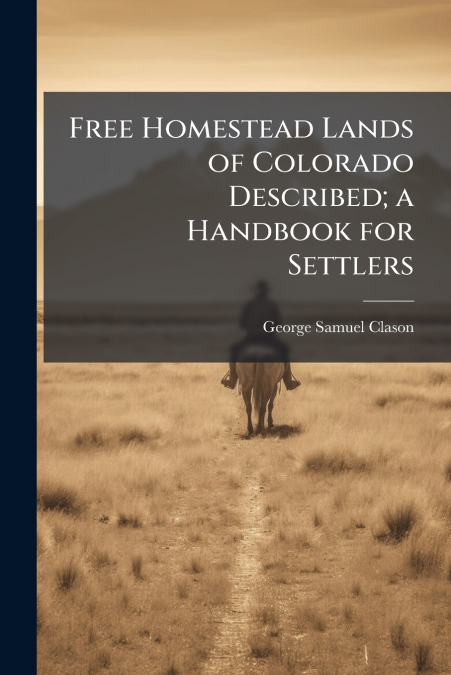
George Samuel Clason
Free Homestead Lands of Colorado Described; a Handbook for Settlers, penned by George Samuel Clason and originally published in 1915, serves as an invaluable resource for those seeking to establish homesteads in the early 20th-century American West. This handbook offers detailed information about the availability of free homestead lands within Colorado, providing prospective settlers with practical guidance on navigating the intricacies of land acquisition and agricultural development.Clason’s work covers essential aspects of pioneering life, including soil conditions, climate considerations, and suitable crops for the region. This book is a fascinating glimpse into the historical opportunities and challenges faced by individuals and families endeavoring to build new lives in the frontier.A must-read for historians, genealogists, and anyone interested in the settlement of the American West, 'Free Homestead Lands of Colorado Described' provides unique insights into the homesteading era and the enduring spirit of those who sought to claim their piece of the American dream.This work has been selected by scholars as being culturally important, and is part of the knowledge base of civilization as we know it. This work was reproduced from the original artifact, and remains as true to the original work as possible. Therefore, you will see the original copyright references, library stamps (as most of these works have been housed in our most important libraries around the world), and other notations in the work.This work is in the public domain in the United States of America, and possibly other nations. Within the United States, you may freely copy and distribute this work, as no entity (individual or corporate) has a copyright on the body of the work.As a reproduction of a historical artifact, this work may contain missing or blurred pages, poor pictures, errant marks, etc. Scholars believe, and we concur, that this work is important enough to be preserved, reproduced, and made generally available to the public. We appreciate your support of the preservation process, and thank you for being an important part of keeping this knowledge alive and relevant.